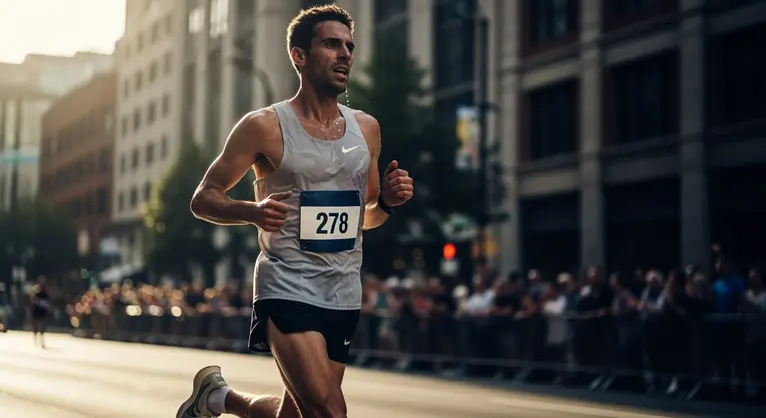Bounce Back Stronger: Proven Injury Prevention and Recovery Strategies for Every Athlete
Staying active is a joy—until pain or injury sets you back. As someone who’s helped countless athletes, from weekend warriors to professionals, I know how frustrating it is to lose momentum. The good news? You can drastically reduce injury risk and recover faster using science-backed methods trusted by Olympic trainers. Let’s dive into what really works to keep you in the game.
Top Injuries Every Athlete Faces
You’re not alone if you’ve ever pulled a hamstring or twisted an ankle. The most common sports injuries include:
- Strains and Sprains: Tend to occur in the muscles (strains) or ligaments (sprains).
- Muscle Tears: Sudden overloads—think sprinting without proper prep.
- Overuse Injuries: Shin splints, tendinitis, and stress fractures sneak up over time.
- Joint Injuries: Knees, shoulders, and ankles are vulnerable.
Why They Happen
Most injuries strike when we ramp up too quickly, skip warmups, or use poor technique. Small imbalances or fatigue can tip the scales—think of it like a car with a slow leak in the tire: sooner or later, the blowout comes if you don’t maintain it.
How to Prevent Setbacks Before They Start
Here are actionable steps you can use today:
- Warm-Up First: Begin each session with dynamic stretching and light movement. Example: 5 minutes of leg swings, arm circles, and lunges.
- Strength Training: Focus on compound moves (like squats, deadlifts) and core stability work. Stronger muscles support your joints.
- Work on Flexibility: Daily stretches, yoga, or Pilates will improve your range of motion and lower strain risk.
- Check Your Form: Use video or professional feedback. Even small technique errors can build up over time.
- Wear the Right Gear: Helmets, braces, and the right shoes aren’t just for looks—they’re proven to reduce trauma.
- Progress Gradually: Increase training intensity or volume by no more than 10% per week.
Recover Like a Pro: What Works
Recovery is where growth happens. Here’s what elite athletes do—and what you can, too.
Hands-on Recovery Routines
- Cold Water Immersion: Brief post-training ice baths (5–15 minutes) or cold showers can help reduce soreness and inflammation.
- Prioritize Sleep: Aim for 7–9 hours every night! This is when muscle and tissue repairs occur.
- Massage and Mobility Work: Use foam rollers, massage guns, or hands-on therapy to relax tight areas and speed up healing.
- Stay Active, Gently: Walk, swim, or bike at a light pace. Gentle movement encourages blood flow without overloading healing tissues.
Nutrition to Heal Fast
- Pre-Workout Fuel: Eat balanced meals with complex carbs and lean proteins.
- After Exercise: Prioritize protein-rich and carb-based snacks within 30–60 minutes (like a chicken wrap or yogurt with fruit).
- Hydrate: Water supports every aspect of cellular repair.
- Micronutrients: Vitamins C and D, zinc, magnesium, and omega-3s all play a role in tissue healing. Don’t overlook a well-rounded diet! For more on the power of vitamin C for athletes, see The Power of Vitamin C in Recovery and Injury Prevention: Science-Based Strategies for Every Athlete.
Smart Tools & Gadgets
- Foam Rollers & Massage Guns: Ease muscle tightness and boost flexibility.
- Compression Garments: Help manage swelling, especially after intense or long sessions.
- Digital Recovery Apps: Many platforms now offer AI-powered recovery guidance; consider integrating them for personalized advice.
Winning the Mental Game
Injury is tough on the body—and the mind. Here’s how to stay motivated and engaged through rehab:
- Set Clear Goals: Break your recovery into small, achievable milestones. Celebrate progress!
- Visualization: Picture yourself getting stronger and returning to your sport. It’s not just “mind games”—mental practice speeds up physical recovery. Learn more about visualization for healing.
- Lean on Your Community: Share updates with friends, your training group, or even online forums. Social support is proven to boost motivation and adherence.
Build Resilience for Long-Term Performance
Consistency is key. Combine strength and flexibility every week, adjust plans based on feedback, and never underestimate the impact of quality sleep and nutrition. The best athletes are those who listen to their bodies—and act early when things don’t feel right.
Your Next Steps
No matter your experience level, these strategies work. Are you facing a frustrating injury right now? Or want to bulletproof your routine for the future? Try making just one or two small changes this week—your body will thank you. For a comprehensive approach, check out our injury recovery checklist to make sure nothing is missed.
Questions or want to share your own recovery tip? Drop a comment below! The GymPulse Club team is here to support you every step of the way. Let’s build resilient, injury-resistant athletes—together.

